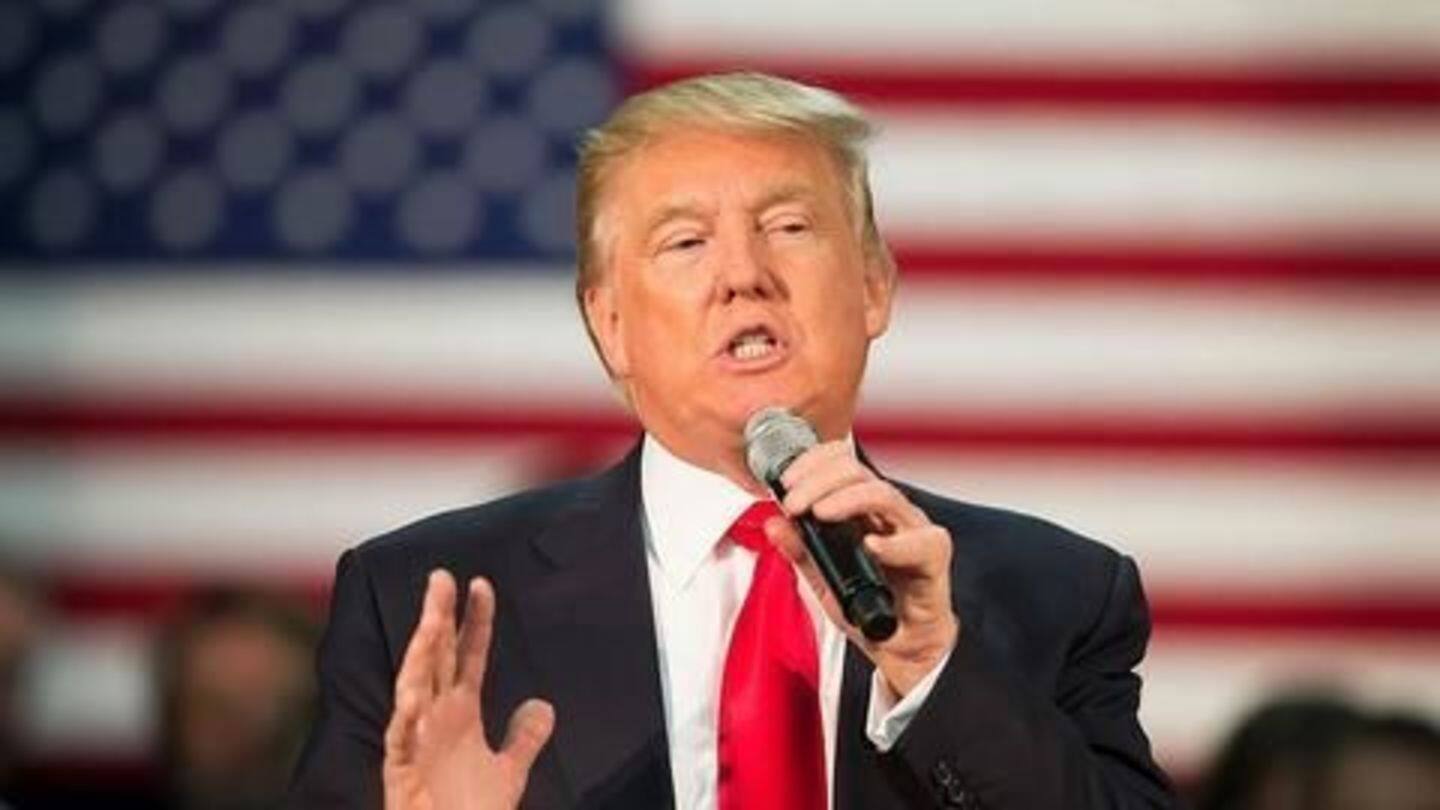
Trump seeks US nuclear supremacy
What's the story
US President Donald Trump has stated that he would want to see the US at "top of the pack", when it comes to nuclear weapons. He stated that the US had fallen behind in nuclear weapons capabilities. He said it would be "wonderful" if no nation had nuclear arms. However, since that was not a possibility he wanted the US to lead the way.
Background
Nuclear weapons: Brief history
Research on nuclear weapons began in the 1930s and 40s to counter Nazi Germany's nuclear ambitions. In 1945, 2 nuclear fission bombs were dropped on Hiroshima and Nagasaki, and remain the only time the weapons were used in warfare. In the 1950s and 1960s, the US and the USSR embarked on a nuclear arms race, refining and enhancing their nuclear capabilities.
Information
Tests, countries, call for ban
In the 1950s, the US, UK and USSR tested several nuclear weapons. In 1960 France tested its first nuclear weapon. In 1964, China joined the club as well. In 1954, India was the first country to call for a ban on using nuclear weapons.
Anti-nuclear movement
The anti-nuclear movement
By 1968, The US, USSR, UK, France and China had consolidated their nuclear weapons capabilities. The Nuclear Non-Proliferation Treaty was opened for signatures in 1968. It sought to limit nuclear weapons capabilities to the 5 known nuclear weapon states, by obligating them to cease technological assistance with non-nuclear weapon states. It also called for disarmament and use of nuclear technology only for peaceful purposes.
Technology improves
Improvement of technology and strategic stalemate
By the late 1960s, nuclear weapons had considerably evolved in range and delivery. In the 1970s, sea launched missiles (SLBMs) and Multiple Independently Targeted Re-Entry Vehicles (MIRVs) were also developed. The Soviets also deployed limited Anti Ballistic Missile systems around Moscow. The US and the USSR were technologically matched and the nuclear arms race seemed unending.
Limitation
Washington, Moscow seek to limit weapon stockpiles
By the 1960s, the US and the USSR began talks on the Strategic Arms Limitation Treaty (SALT). The treaty aimed to limit each nation's stockpile of nuclear warheads, limit the number of anti ballistic missile interceptors deployed by each country and also demarcate specific regions that can be protected by ABM systems. SALT-I set the pace for talks, but did little to reduce stockpiles.
More treaties
Continued talks
Through the next few decades, the US and USSR, would go over several treaties, that all sought to limit the number of warheads, delivery vehicles (ICBMs, SLBMs, bombers) and launching platforms. This remained the framework for nuclear weapons limitation talks between the two countries, ever since. Currently, the New START treaty is the latest nuclear arms limitation treaty between both countries.
New START
The New START
The New Strategic Arms Reduction Treaty (START) between the US and Russia, seeks to limit the number of warheads with each country to 1550, the number of deployed delivery vehicles to 700 and the number of launchers to 800. The treaty came into force on February 5, 2011 and is to remain in force for another 10 years.
Quote
Trump calls for US to lead nuclear race
"It would be wonderful, a dream would be that no country would have nukes, but if countries are going to have nukes, we're going to be at the top of the pack." - Donald trump.
Current stockpiles
Current nuclear stockpiles
According to the Bulletin of Atomic Scientists, there are 9920 nuclear warheads in the world. Of this the US has 4760, while Russia has 4300 nuclear warheads. China, UK and France together have 775 nuclear war heads. India has 110, Pakistan has 120, while North Korea has less than 10. It is believed that Israel also possesses approximately 80 nuclear warheads.